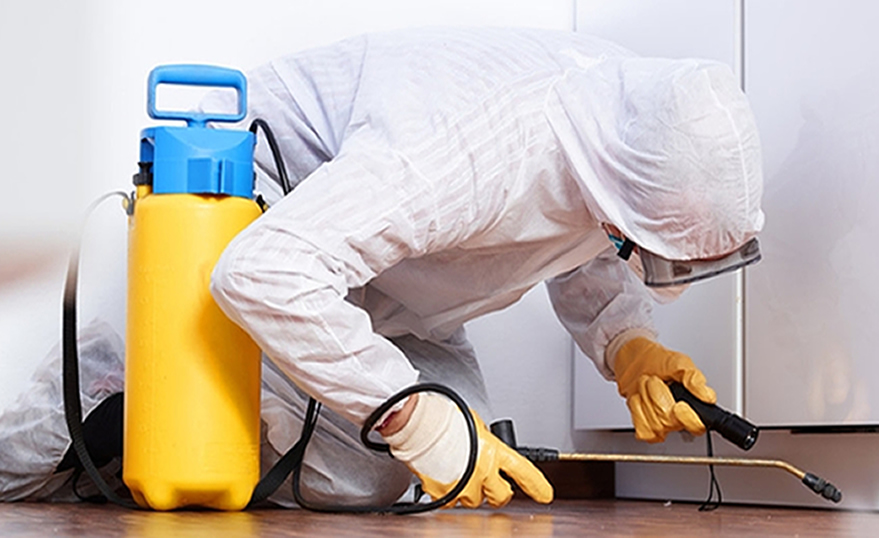Reputable Pest Control Washington DC: Secure Your Home and Service!
Reputable Pest Control Washington DC: Secure Your Home and Service!
Blog Article
Expert Insect Control Techniques for Long-Term Results
In the realm of insect control, achieving sustained efficacy and long-term outcomes calls for a careful strategy that goes beyond simple elimination. Specialist pest control techniques encapsulate a thorough approach that begins with a complete evaluation and analysis, complied with by exact parasite identification to recognize their behavior patterns. The implementation of Integrated Pest Management (IPM) principles, coupled with eco-conscious treatments, creates the keystone of lasting bug elimination. Nonetheless, truth test depends on the recurring monitoring and upkeep of the dealt with areas, making sure a pest-free environment for the foreseeable future. By delving into the details of these techniques, a deeper understanding of expert parasite control approaches for enduring end results emerges.
Examination and Assessment
Upon getting in a property for bug control solutions, the initial action is an extensive evaluation and analysis to identify the degree of the infestation and establish the most reliable therapy strategy. Expert bug control specialists are trained to thoroughly check out the premises, looking for indications of parasite activity such as droppings, gnaw marks, nests, or any type of architectural damages. They will also analyze the problems that might be drawing in pests, such as food resources, water leaks, or entry points.

Bug Recognition and Behavior

Furthermore, comprehending the actions of the recognized pest is vital to implementing reliable control steps. Recognizing where pests nest, what they feed on, and their activity patterns can help pest control experts devise techniques to eliminate them successfully. Some insects might be nocturnal, while others are much more active throughout the day. This expertise permits for the application of therapies at optimal times for maximum performance.
Integrated Bug Management (IPM)
Integrated Parasite Administration (IPM) strategies incorporate numerous techniques to regulate and prevent insect infestations in a sustainable and environmentally friendly manner. bed bug dog. By incorporating techniques such as organic control, habitat manipulation, alteration of social methods, and using immune ranges, IPM aims to minimize using chemical pesticides
Among the essential concepts of IPM is the emphasis on avoidance. This aggressive method involves surveillance insect populations routinely to discover any possible concerns before they escalate. By look these up determining bug issues early on, pest control procedures can be executed quickly and effectively.
Furthermore, IPM promotes the use of non-toxic insect control techniques whenever possible. This can include utilizing natural predators of the bugs, presenting beneficial insects, or using pheromones to disrupt mating patterns. By decreasing reliance on chemical pesticides, IPM not only safeguards the environment but also assists preserve an equilibrium in the environment.
Environmentally-Friendly Treatments
Carrying out eco-conscious approaches in bug control treatments can properly deal with invasions while focusing on environmental sustainability. Environmentally-friendly treatments focus on decreasing the impact of pest control techniques on ecological communities, non-target microorganisms, and human health and wellness.
Another key aspect of environmentally-friendly treatments is using organic and naturally degradable products that damage down rapidly without leaving damaging residues in the atmosphere. Botanical pesticides stemmed from plants like chrysanthemums or neem use efficient pest control while posturing very little danger to non-target types. Using methods like warmth therapies or pheromone traps can target specific bugs with accuracy, reducing the general ecological influence of bug control techniques.
Continuous Surveillance and Maintenance
Regular examinations by skilled experts are required to recognize any type of indications of pest task, examine the effectiveness of previous therapies, and make modifications to the insect control strategy as required. By keeping track of pest populaces over time, parasite control specialists can track patterns, expect prospective issues, and implement precautionary go to these guys steps to minimize the risk of future infestations.
In enhancement to surveillance, maintenance practices are crucial for long-lasting parasite control success. This includes applying appropriate hygiene procedures to eliminate potential food and water sources for pests, sealing access indicate protect against insects from getting in the facilities, and attending to any kind of structural concerns that can help a fantastic read with parasite infestations (exterminator near me). By integrating continuous monitoring and upkeep into an incorporated pest monitoring method, companies can make sure a pest-free environment and secure their property against pricey damages and health and wellness risks
Conclusion
To conclude, making use of professional pest control strategies such as extensive inspection and analysis, accurate parasite identification and understanding of their actions, integrated insect monitoring techniques, environmentally-friendly treatments, and continuous tracking and upkeep are essential for achieving long-term results in bug control. By implementing these methods, individuals can successfully take care of parasite problems and keep a pest-free setting in a lasting fashion.
Report this page